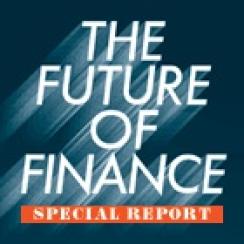
Bouey wanted Claude Lamoureux, who had been the head of Metropolitan Life’s Canadian operations, to run it. Lamoureux told the headhunter who called that he wasn’t interested in running Ontario Teachers’. But he was enticed by the prospect of lunch with the famous Bouey at the Rideau Club in Ottawa.
Business papers weren’t allowed in the Rideau’s private dining room, so Lamoureux drew up a plan on a napkin that outlined terms for the new company, such as corporate titles to distinguish it from the bureaucracy of a government shop, the CEO reporting to the board and being able to delegate authority to his or her staff, only the directors being able to fire the CEO and an incentive plan for employees based on performance. Lamoureux reportedly told Bouey, “You can’t maximize returns if you have one arm tied behind your back.” Bouey agreed and Lamoureux took the job.
Bouey established guidelines for board members to be drawn from the business community, human resources, finance, economics and actuarial science, for example. There would be one teacher, but only one, and no elected officials or bureaucrats on the board.
Robert Bertram, the first chief investment officer, didn’t want a job with the newly formed Ontario Teachers’ either. He was living in Edmonton and as treasurer of Alberta Government Telephones, he was taking it private. But he ended up flying to Toronto and interviewing before a ten-person panel, including board members. The biggest — and most difficult — question they had was what to do with the plan’s only asset: $18.5 billion of nonmarketable Ontario debentures. Bertram’s answer was short but confident: “We’ll have to get into the derivatives business.” There was silence. It was 1990, and few had heard of derivatives.
Despite that silence, Bertram received a job offer and Lamoureux convinced him to take it. Bertram now needed to turn into reality his idea of using derivatives to diversify the plan away from government debentures. Within three months Ontario invested $805 million in Standard & Poor’s 500 stock index futures. By the end of 1993, Bertram had increased the plan’s equity exposure to 47 percent. The board was nervous about Bertram’s move and even asked him and Lamoureux to get a written opinion from the Department of Finance. Bertram also used derivatives to get around Canada’s restrictive foreign content rules, since the contracts didn’t count toward foreign exposure.
Perhaps Ontario Teachers’ most notable decision was to move into private equity. Early on it invested in external funds and made direct investments in companies. There were no Canadian private equity funds at the time, because private companies were held primarily by banks and wealthy families. Not so in the U.S., where a growing number of funds filled the void left by the Glass-Steagall Act, which prevented banks from making investments in private companies.
However, Ontario Teachers’ lost money almost right out of the gate in White Rose Crafts and Nurseries, a chain of garden nurseries that went bankrupt, and Innocan, a venture capital company. Jim Leech, CEO of Ontario Teachers’, says, “Remarkably, our board and management didn’t say, ‘been there, done that, got burned; we’re out of here.’ Instead, they said, ‘you drilled a dry hole on your first attempt; let’s see what the second attempt looks like.’” Five other investments did well and the pension fund had $100 million portfolio by the end of the first year.
Even when it came to hockey, Canada’s lifeblood, Ontario Teachers’ invested only on the expected financial fortunes of a company. In 1994, George Engman, the British-born head of the private capital group at the time, thought Maple Leaf Gardens, the Maple Leafs’ owner and the name of Maple Leaf Sports and Entertainment, would make a good investment. When a colleague told Engman he should instead consider “the Habs” — the storied Montreal Canadiens — Engman responded with a sincere “Who are they?” He had never been to a hockey game.
Public pension funds have often been pressured to use their quasipublic assets to invest in companies in sectors such as clean energy or in those that might produce jobs during hard times. In the early 1990s the government started requiring pension funds to invest 2 percent of assets in start-up companies through a government-sponsored pool. Lamoureux argued that the plan’s fiduciary duty was to beneficiaries and that any early-stage investing should be done for financial, not political reasons. It wasn’t easy, but Ontario stuck to its position, even under criticism that it was being uncooperative.
Last month, Ontario Teachers’ marked a milestone. After cashing in the last of its nonmarketable debentures, it burned a copy. Eight hundred people, including current and past employees, the plan’s original actuary and Eileen Mercier, the current chairman of the board, watched the symbolic burning at Ontario Teachers’ headquarters. At the ceremony, Petroff said part of Ontario Teachers’ success can be attributed to the innovation forced on it by having to efficiently and profitably move out of those debentures. Other creative investment ventures followed.






